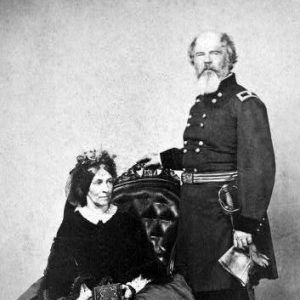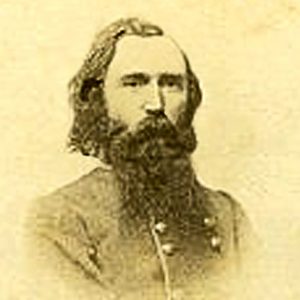calsfoundation@cals.org
Action at Wallace's Ferry
aka: Action at Big Creek
| Other Names: | Action at Big Creek |
| Location: | Phillips County |
| Date: | July 26, 1864 |
| Principal Commanders: | Colonel W. S. Brooks, Lieutenant Colonel Moses Reed (US); Colonel Archibald Dobbins (CS) |
| Forces Engaged: | Fifty-sixth and Sixtieth U.S. Colored Infantry, Second U.S. Colored Artillery, Fifteenth Illinois Cavalry (US); Dobbins’s Arkansas Cavalry, Gordon’s Missouri Cavalry (CS) |
| Estimated Casualties: | 63 (US); at least 12 (CS) |
| Result: | A draw |
The action at Wallace’s Ferry was fought July 26, 1864, as Union forces left Helena (Phillips County) on a reconnaissance mission to find Confederate cavalry raiders operating in Phillips County.
In late June and early July 1864, Brigadier General Joseph O. Shelby, the Confederate commander of northeast Arkansas, dispatched 1,000 cavalrymen under Colonel Archibald Dobbins and Colonel B. Frank Gordon to raid Phillips County plantations that were being operated under the auspices of the U.S. government. The Union commander in Helena, Brigadier General Napoleon B. Buford, sent out a reconnaissance in force on July 25 to locate and hinder the operations of the Rebel horsemen.
The Union force under Colonel W. S. Brooks (whose brother Joseph would later be a principal in the Brooks-Baxter War) consisted of 280 men of the Fifty-sixth U.S. Colored Infantry, eighty from the Sixtieth U.S. Colored Infantry, and a two-gun section of Battery E, Second U.S. Colored Artillery. They were ordered to cross Big Creek at Wallace’s Ferry, southwest of Helena, and cooperate with a second force of about 150 troops of the Fifteenth Illinois Cavalry under Major Eagleton Carmichael. Carmichael’s troops were dispatched by steamer to Old Town south of Big Creek with orders to work their way back and cooperate with Brooks’s command.
The Union infantry unit arrived at Big Creek early on July 26. After crossing the creek at daylight and being told that Dobbins’s men had left the area the day before, Brooks’s men backtracked across Big Creek and set out pickets. At about 6:00 a.m., Dobbins’s Arkansas and Missouri cavalrymen suddenly attacked without warning from three sides. The commander of the Union artillery, Captain Jonas Fred Lembke, was killed and Brooks was mortally wounded early in the attack. Lieutenant Colonel Moses Reed assumed command, and the black infantrymen formed in lines and fought desperately for the next four hours.
Help arrived at about 10:00 a.m. as Carmichael’s Illinois cavalrymen raced in and sliced through a portion of Dobbins’s troops positioned behind Reed’s infantry. The combined force then began a fighting retreat northeast toward Helena under constant attack from all sides. About eleven miles from Helena, the U.S. soldiers broke through a final line of Confederate cavalrymen and encountered no further resistance.
Union casualties totaled nineteen killed, forty wounded, and four missing. Dobbins’s losses were unreported, though Union reports noted seven Confederates killed and four captured. Undaunted by the sharp action at Big Creek, Dobbins’s men remained in the area through August 1, raiding and damaging federally leased plantations in the Helena area with little resistance from Union troops.
For additional information:
Robertson, Brian K. “‘Will They Fight? Ask the Enemy’: United States Colored Troops at Big Creek, Arkansas, July 26, 1864.” Arkansas Historical Quarterly 66 (Autumn 2007): 320–332.
The War of the Rebellion: A Compilation of the Official Records of the Union and Confederate Armies. Series 1, Vol. 41. Washington DC: Government Printing Office, 1890–1901, p. 16–27.
Williams, Charles G. “The Action at Wallace’s Ferry.” Phillips County Historical Quarterly 25 (December 1986 and March 1987): 46–55.
Mark K. Christ
Arkansas Historic Preservation Program
 Civil War Timeline
Civil War Timeline Military
Military Napoleon and Mary Ann Buford
Napoleon and Mary Ann Buford  Archibald Dobbins
Archibald Dobbins  William Kretsinger
William Kretsinger 



Comments
No comments on this entry yet.